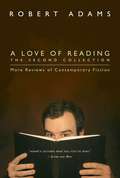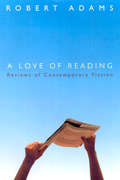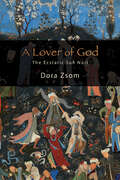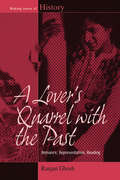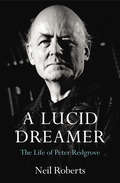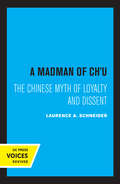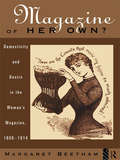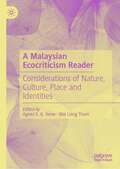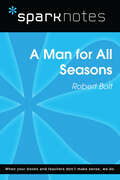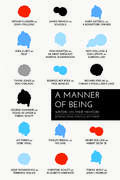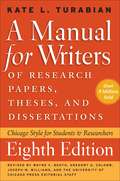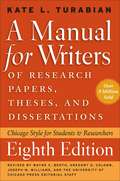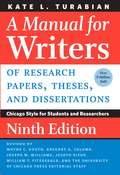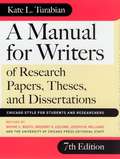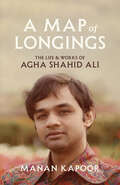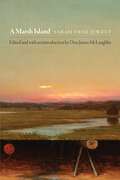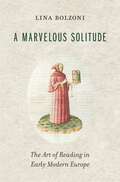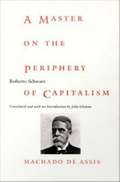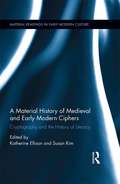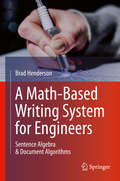- Table View
- List View
A Love of Reading, The Second Collection: More Reviews of Contemporary Fiction
by Robert AdamsFourteen brilliant new reviews fromthe author ofA Love of Reading. Passionate, thought provoking, and witty. A Love of Reading, the Second Collectioncontains 14 new reviews of modern classics from a discriminating, highly entertaining, and prodigiously well-read guide. In a stimulating selection, ranging from Margaret Atwood’sAlias Graceto Zadie Smith’sWhite Teeth, and from Charles Frazier’sCold Mountainto Sheri Holman’sThe Dress Lodger, popular literary critic Robert Adams skilfully interweaves a nimble and enlightening discussion of plot, theme, and characterization with fascinating historical, biographical, and literary context. Adams is repeatedly drawn to the spectacle of less-than-perfect humans making their way in a hostile world, and as a result his reviews are a hugely satisfying mix of rich pathos and abundant humour. In the words of theCalgary Herald, they are “a bibliophile’s dream. ”
A Love of Reading: Reviews of Contemporary Fiction
by Robert AdamsEvery year, Robert Adams prepares a series of five reviews of contemporary novels, to be delivered alone on a theatre stage to sold-out audiences in Toronto and Montreal. In A Love of Reading Adams has now gathered 18 of his most brilliant reviews, from Jack Maggs by Peter Carey and The Poisonwood Bible by Barbara Kingsolver, to A Fine Balance by Rohinton Mistry and Barney's Version by Mordecai Richler. In them he skillfully interweaves a nimble and entertaining discussion of plot, theme, and characterization with fascinating historical, biographical, and literary context. He is repeatedly drawn to the spectacle of less-than-perfect humans making their way in a hostile world, and as a result a review by Robert Adams is almost always a hugely satisfying mix of rich pathos and abundant humour.Famously, Adams reads a book a day, from which he selects only those novels that are truly extraordinary, that have made him see some part of the world or some aspect of the human condition in a new light - because for Adams, the best books always take the reader on a journey, with a destination very distant from the point of departure. It should be not only a journey of discovery - an exploration of the author's vision - but also of risk. By matching one's own vision to that of the author, says Adams, the reader enters an exciting negotiation to produce a new vision of his own. This joint enterprise between reader and writer, the shared risk and the wonder of discovery, is the foundation of A Love of Reading.* For the last six years, Robert Adams has presented an annual series of book reviews to sold out audiences. Eighty per centof Adams' 3,000 subscribers in Toronto and Montreal renew for the following season* This book is a selection of modern classics from a discriminating and entertaining guide* Perfect for reading groups* Quill & Quire, noting the jump in sales of any book reviewed by Adams, has called the phenomenon "The Adams Effect"From the Hardcover edition.
A Lover of God: The Ecstatic Sufi Nūrī (SUNY series in Islam)
by Dora ZsomOne of the so-called ecstatic (or intoxicated) Sufis of Baghdad, Abū Ḥusayn al-Nūrī (d. 907/8) was famous for his quasi-blasphemous utterances and shocking public behavior. He was often enraptured by a passionate love of God that led him to eccentric acts that scandalized both ordinary people and the religious authorities. Besides yielding to divine love and beauty, he would occasionally come near succumbing to bodily temptations and carnal passions. Despite Nūrī’s outrageous behavior, Junayd, the moderate or sober Sufi par excellence, held him in high esteem, kept corresponding with him, and commented upon his controversial ecstatic sayings. This book collects Nūrī’s literary legacy by surveying the sources for his life—poems, sayings, and comments on the Quran, including an exchange of letters between him and Junayd preserved in the Cairo Genizah—and by discussing the authorship of the Stations of the Hearts, which has been widely attributed to Nūrī.
A Lover's Quarrel With The Past
by Ranjan GhoshAlthough not a professional historian, the author raises several issues pertinent to the state of history today. Qualifying the 'non-historian' as an 'able' interventionist in historical studies, the author explores the relationship between history and theory within the current epistemological configurations and refigurations. He asks how history transcends the obsessive 'linguistic' turn, which has been hegemonizing literary/discourse analysis, and focuses greater attention on historical experience and where history stands in relation to our understanding of ethics, religion and the current state of global politics that underlines the manipulation and abuse of history.
A Lucid Dreamer: The Life of Peter Redgrove
by Peter Redgrove Dr Neil RobertsThe work of the poet Peter Redgrove is one of the great unexplored treasures of late twentieth century literature. His prolific output presents an intriguing variety of personae: magician, scientist, lover, psychologist, joker, madman. It is only now, with the publication of his Collected Poems and this biography, that we can see how and why these personae developed - and discover the full depth and range of this visionary writer.Born into an apparently conventional middle-class family that was in reality deeply disturbed, the poet finally emerged: transforming himself from the neurotic, Oedipal young scientist, through a process of mental breakdown, insulin coma therapy, erotic revelation and the discovery of poetic companionship at Cambridge - and particularly his friendship and rivalry with Ted Hughes.Neil Roberts explores the inner story of this emergence, and Redgrove's later development through marriage, family life, the fellowship of the 'Group', alcoholic excess, infidelity and marital breakdown to his triumphant later partnership with Penelope Shuttle. We also discover, for the first time, some darker secrets: his fascination with Aleister Crowley, his damaged and damaging relationship with his father, and the lifelong sexual fetish which he called the 'Game'. Drawing on the poet's intimate journals and correspondence, and interviews with family, friends and colleagues, A Lucid Dreamer tells the exceptionally inward and revealing story of an astonishing creative life.
A Madman of Chu: The Chinese Myth of Loyalty and Dissent (Center for Chinese Studies, Publications)
by Laurence A. SchneiderThis title is part of UC Press's Voices Revived program, which commemorates University of California Press’s mission to seek out and cultivate the brightest minds and give them voice, reach, and impact. Drawing on a backlist dating to 1893, Voices Revived makes high-quality, peer-reviewed scholarship accessible once again using print-on-demand technology. This title was originally published in 1980.
A Magazine of Her Own?: Domesticity and Desire in the Woman's Magazine, 1800-1914
by Margaret BeethamLike the corset, the women's magazines which emerged in the nineteenth century produced a `natural' idea of femininity: the domestic wife; the fashionable woman; the romancing and desirable girl. Their legacy, from agony aunts to fashion plates, are easily traced in their modern counterparts. But do these magazines and their promises empower or disempower their readers? A Magazine of Her Own? is a lively and revealing exploration of this immensely popular form from its beginnings. In fascinating detail Margaret Beetham investigates the desires, images and interpretations of femininity posed by a medium whose readership was and still is almost exclusively female. A Magazine of Her Own is at once a chronological tracing of the history, a collection of intriguing case studies and an intervention into recent debates about gender and sexuality in popular reading. It is a book which anyone who is interested in the unique, influential world of the woman's magazine - students, scholars and general readers alike - will want to read
A Malaysian Ecocriticism Reader: Considerations of Nature, Culture, Place and Identities
by Agnes S. K. Yeow Wai Liang ThamThis collection of essays brings together ecocritical interpretations of Malaysian texts – including fiction, nonfiction, and other media / cultural expressions. It includes original works by environmental activists as well as emerging and established scholars, who collectively analyse various aspects of Malaysian ecological discourse.The contributors address crucial – and often controversial – topics such as local ecological imaginations, wildlife conservation, overdevelopment, postcolonial ecological identities, biopolitics, nature and sexuality, nature and race, the commodification of nature, nature–culture embodiments and entanglements, human–animal relations, waste and materiality, human and other-than-human agency, toxicity and slow violence, self-representations as well as attitudes towards land, nativity and indigeneity, migrancy and diaspora.Readers will gain valuable insights into the ways in which environments and ecological relationships are mediated within this national space, while opening up room to theorise beyond its boundaries.
A Man for All Seasons (SparkNotes Literature Guide Series)
by SparkNotesA Man for All Seasons (SparkNotes Literature Guide) by Robert Bolt Making the reading experience fun! Created by Harvard students for students everywhere, SparkNotes is a new breed of study guide: smarter, better, faster. Geared to what today's students need to know, SparkNotes provides: *Chapter-by-chapter analysis *Explanations of key themes, motifs, and symbols *A review quiz and essay topicsLively and accessible, these guides are perfect for late-night studying and writing papers
A Manner of Being: Writers on Their Mentors
by Jeff Parker Annie LiontasWhat do the punk singer Henry Rollins, the Guatemalan writer Rodrigo Rey Rosa, the American authors Tobias Wolff, Tayari Jones, and George Saunders, the Canadian writer Sheila Heti, and the Russian poet Polina Barskova have in common? At some point they all studied the art of writing deeply with someone. The nearly seventy short essays in A Manner of Being, by some of the best contemporary writers from around the world, pay homage to mentors—the writers, teachers, nannies, and sages—who enlighten, push, encourage, and sometimes hurt, fail, and limit their protégés. There are mentors encountered in the schoolhouse and on farms, in NYC and in MFA programs; mentors who show up exactly when needed, offering comfort, a steadying hand, a commiseration, a dose of tough love. This collection is rich with anecdotes from the heartfelt to the salacious, gems of writing advice, and guidance for how to live the writing life in a world that all too often doesn’t care whether you write or not. Each contribution is intimate and distinct—yet a common theme is that mentors model a manner of being. Selections include: Arthur Flowers on John O’Killens James Franco on Harmony Korine Mary Gaitskill on an Ann Arbor bookstore owner Noy Holland and Sam Lipsyte on Gordon Lish Tayari Jones on Ron Carlson Henry Rollins on Hubert Selby Jr. Rodrigo Rey Rosa on Paul Bowles George Saunders on Douglas Unger and Tobias Wolff Christine Schutt on Elizabeth Hardwick Tobias Wolff on John L’Heureux . . . and many more
A Manual for Writers of Research Papers, Theses, and Dissertations
by Kate L. TurabianA little more than seventy-five years ago, Kate L. Turabian drafted a set of guidelines to help students understand how to write, cite, and formally submit research writing. Seven editions and more than nine million copies later, the name Turabian has become synonymous with best practices in research writing and style. Her Manual for Writers continues to be the gold standard for generations of college and graduate students in virtually all academic disciplines. Now in its eighth edition, A Manual for Writers of Research Papers, Theses, and Dissertations has been fully revised to meet the needs of today’s writers and researchers. The Manual retains its familiar three-part structure, beginning with an overview of the steps in the research and writing process, including formulating questions, reading critically, building arguments, and revising drafts. Part II provides an overview of citation practices with detailed information on the two main scholarly citation styles (notes-bibliography and author-date), an array of source types with contemporary examples, and detailed guidance on citing online resources. The final section treats all matters of editorial style, with advice on punctuation, capitalization, spelling, abbreviations, table formatting, and the use of quotations. Style and citation recommendations have been revised throughout to reflect the sixteenth edition of The Chicago Manual of Style. With an appendix on paper format and submission that has been vetted by dissertation officials from across the country and a bibliography with the most up-to-date listing of critical resources available, A Manual for Writers remains the essential resource for students and their teachers.
A Manual for Writers of Research Papers, Theses, and Dissertations 8th Edition
by Kate L. TurabianA little more than seventy-five years ago, Kate L. Turabian drafted a set of guidelines to help students understand how to write, cite, and formally submit research writing. Seven editions and more than nine million copies later, the name Turabian has become synonymous with best practices in research writing and style. Her Manual for Writers continues to be the gold standard for generations of college and graduate students in virtually all academic disciplines. Now in its eighth edition, A Manual for Writers of Research Papers, Theses, and Dissertations has been fully revised to meet the needs of today's writers and researchers. The Manual retains its familiar three-part structure, beginning with an overview of the steps in the research and writing process, including formulating questions, reading critically, building arguments, and revising drafts. Part II provides an overview of citation practices with detailed information on the two main scholarly citation styles (notes-bibliography and author-date), an array of source types with contemporary examples, and detailed guidance on citing online resources. The final section treats all matters of editorial style, with advice on punctuation, capitalization, spelling, abbreviations, table formatting, and the use of quotations. Style and citation recommendations have been revised throughout to reflect the sixteenth edition of The Chicago Manual of Style. With an appendix on paper format and submission that has been vetted by dissertation officials from across the country and a bibliography with the most up-to-date listing of critical resources available, A Manual for Writers remains the essential resource for students and their teachers.
A Manual for Writers of Research Papers, Theses, and Dissertations, Eighth Edition: Chicago Style for Students and Researchers
by Joseph M. Williams Kate L. Turabian Wayne C. Booth Gregory G. Colomb Wayne C. University of Chicago Press StaffA little more than seventy-five years ago, Kate L. Turabian drafted a set of guidelines to help students understand how to write, cite, and formally submit research writing. Seven editions and more than nine million copies later, the name Turabian has become synonymous with best practices in research writing and style. Her Manual for Writers continues to be the gold standard for generations of college and graduate students in virtually all academic disciplines. Now in its eighth edition, A Manual for Writers of Research Papers, Theses, and Dissertations has been fully revised to meet the needs of today’s writers and researchers. The Manual retains its familiar three-part structure, beginning with an overview of the steps in the research and writing process, including formulating questions, reading critically, building arguments, and revising drafts. Part II provides an overview of citation practices with detailed information on the two main scholarly citation styles (notes-bibliography and author-date), an array of source types with contemporary examples, and detailed guidance on citing online resources. The final section treats all matters of editorial style, with advice on punctuation, capitalization, spelling, abbreviations, table formatting, and the use of quotations. Style and citation recommendations have been revised throughout to reflect the sixteenth edition of The Chicago Manual of Style. With an appendix on paper format and submission that has been vetted by dissertation officials from across the country and a bibliography with the most up-to-date listing of critical resources available, A Manual for Writers remains the essential resource for students and their teachers.
A Manual for Writers of Research Papers, Theses, and Dissertations, Ninth Edition: Chicago Style for Students and Researchers (Chicago Guides to Writing, Editing, and Publishing)
by Joseph M. Williams Kate L. Turabian Wayne C. Booth Gregory G. Colomb Joseph Bizup The University of Chicago Press Editorial Staff William T. FitzGeraldWhen Kate L. Turabian first put her famous guidelines to paper, she could hardly have imagined the world in which today’s students would be conducting research. Yet while the ways in which we research and compose papers may have changed, the fundamentals remain the same: writers need to have a strong research question, construct an evidence-based argument, cite their sources, and structure their work in a logical way. A Manual for Writers of Research Papers, Theses, and Dissertations—also known as “Turabian”—remains one of the most popular books for writers because of its timeless focus on achieving these goals. This new edition filters decades of expertise into modern standards. While previous editions incorporated digital forms of research and writing, this edition goes even further to build information literacy, recognizing that most students will be doing their work largely or entirely online and on screens. Chapters include updated advice on finding, evaluating, and citing a wide range of digital sources and also recognize the evolving use of software for citation management, graphics, and paper format and submission. The ninth edition is fully aligned with the recently released Chicago Manual of Style, 17th edition, as well as with the latest edition of The Craft of Research. Teachers and users of the previous editions will recognize the familiar three-part structure. Part 1 covers every step of the research and writing process, including drafting and revising. Part 2 offers a comprehensive guide to Chicago’s two methods of source citation: notes-bibliography and author-date. Part 3 gets into matters of editorial style and the correct way to present quotations and visual material. A Manual for Writers also covers an issue familiar to writers of all levels: how to conquer the fear of tackling a major writing project. Through eight decades and millions of copies, A Manual for Writers has helped generations shape their ideas into compelling research papers. This new edition will continue to be the gold standard for college and graduate students in virtually all academic disciplines.
A Manual for Writers of Research Papers, Theses, and Dissertations: Chicago Style for Students and Researchers (7th edition)
by Joseph M. Williams Kate L. Turabian Wayne C. Booth Gregory G. ColombThis seventh edition of Turabian's "Manual" is a classic reference revised for a new age. It is tailored to a new generation of writers using tools its original author could not have imagined-- while retaining the clarity and authority that generations of scholars have come to associate with the name Turabian.
A Map of Longings: The Life and Works of Agha Shahid Ali
by Manan KapoorThe beautifully written first biography of one of the world’s finest twentieth-century poets Agha Shahid Ali (1949–2001) was one of the most celebrated American poets of the latter twentieth century, and his works have touched millions of lives around the world. Traversing multiple geographies, cultures, religions, and traditions, he mapped the varied landscapes of the Indian subcontinent and the United States. In this biography, Manan Kapoor narrates Shahid’s evolution, following in the footsteps of the “Beloved Witness” from Kashmir and New Delhi to the American Southwest and Massachusetts. He charts Shahid’s friendships with literary figures such as James Merrill, Salman Rushdie, and Edward Said; explores how Shahid responded to events around the world, including the partition of the Indian subcontinent and the AIDS epidemic in America; and draws on unpublished materials and in-depth interviews to reveal the experiences and relationships that informed his poetry. Hailed upon its release in India as “lush” and “poetic,” A Map of Longings is the story of an extraordinary poet, the works he left behind, and the legacy of his singular poetic vision.
A Marsh Island (Q19: The Queer American Nineteenth Century)
by Sarah Orne JewettToward the end of her life, Sarah Orne Jewett (1849–1909) made a surprising disclosure. Instead of the critically lauded The Country of the Pointed Firs, Jewett declared her “best story” to be A Marsh Island (1885), a little-known novel. Why? One reason is that it demonstrates Jewett’s range. Known primarily for her vignettes, Jewett accomplished in these pages a truly great novel. Undoubtedly, another reason lies in the novel’s themes of queer kinship and same-sex domesticity, as enjoyed by the flamboyant protagonist Dick Dale. Written a few years into Jewett’s decades-long companionship with Annie Fields, A Marsh Island echoes Jewett’s determination to split time between her family home in Maine and Fields’s place on Charles Street in Boston. The novel follows the adventures of Dale, a Manhattanite landscape painter in the Great Marsh of northeastern Massachusetts and envisions the latter region’s saltmarsh as a figure for dynamic selfhood: the ever-shifting boundaries between land and sea a model for valuing both individuality and a porous openness to the gifts of others.Jewett’s works played a major role in popularizing the genre of American regionalism and have garnered praise, both in her time and ours, for her skill in rendering the local landscapes and fishing villages along or near the coasts of New England. Just as Jewett brought attention to the unique beauty and value of the Great marsh region, editor Don James McLaughlin reveals a convergence of regionalism and sexuality in Jewett’s work in his introduction. A Marsh Island reminds us that queer kinship has a long tradition of being extended to incorporate queer ecological belonging, and that the meaning of “companionship” itself is enriched when we acknowledge its indebtedness to environment.
A Marvelous Solitude: The Art of Reading in Early Modern Europe (The Bernard Berenson Lectures on the Italian Renaissance Delivered at Villa I Tatti #6)
by Lina BolzoniA preeminent Renaissance scholar illuminates early modern encounters with books, in which literature became a portal to self-awareness and miraculous communion between author and reader.The experience of reading is often presented as personal and transformative—a journey of self-discovery and, perhaps, renewal. In A Marvelous Solitude, Lina Bolzoni examines the early modern roots of this attitude toward the readerly act. Between the fourteenth and sixteenth centuries, European men of letters increasingly came to see books as something more than compendia of knowledge: they could also help readers understand the human condition. As Bolzoni shows, Petrarch, Boccaccio, Machiavelli, Montaigne, and Tasso all presented reading as a private encounter and a dialogue with the author.For many Renaissance intellectuals, reading was instrumental to the construction of the self, which was enriched by contact with other learned men. These readers imagined the book as a mirror image of its author, with whom they held a secret affinity. In their letters to one another, humanists described the book as a body, reflecting the notion that reading literature placed its author in the room with oneself. Reading the work of a deceased author became akin to a necromantic rite, as the writers of bygone times were resurrected and placed in contemporary conversation. The vogue for hanging portraits of authors in libraries and studios ensured that the image of the creator was never far from his words, cementing bonds of friendship across barriers of time.These myths—charming, fragile, and powerful—invested the readerly encounter with miraculous properties that lingered in the hearts of the Romantics. And something of those wonders persists today, in the intimate feeling that reading yet provokes.
A Master on the Periphery of Capitalism: Machado De Assis
by Roberto SchwarzA Master on the Periphery of Capitalism is a translation (from the original Portuguese) of Roberto Schwarz's renowned study of the work of Brazilian novelist Machado de Assis (1839-1908). A leading Brazilian theorist and author of the highly influential notion of "misplaced ideas," Schwarz focuses his literary and cultural analysis on Machado's The Posthumous Memoirs of Brás Cubas, which was published in 1880. Writing in the Marxist tradition, Schwarz investigates in particular how social structure gets internalized as literary form, arguing that Machado's style replicates and reveals the deeply embedded class divisions of nineteenth-century Brazil. Widely acknowledged as the most important novelist to have written in Latin America before 1940, Machado had a surprisingly modern style. Schwarz notes that the unprecedented wit, sarcasm, structural inventiveness, and mercurial changes of tone and subject matter found in The Posthumous Memoirs of Brás Cubas marked a crucial moment in the history of Latin American literature. He argues that Machado's vanguard narrative reflects the Brazilian owner class and its peculiar status in both national and international contexts, and shows why this novel's success was no accident. The author was able to confront some of the most prestigious ideologies of the nineteenth century with some uncomfortable truths, not the least of which was that slavery remained the basis of the Brazilian economy. A Master on the Periphery of Capitalism will appeal to those with interests in Latin American literature, nineteenth century history, and Marxist literary theory.
A Material History of Medieval and Early Modern Ciphers: Cryptography and the History of Literacy (Material Readings in Early Modern Culture)
by Katherine Ellison Susan KimThe first cultural history of early modern cryptography, this collection brings together scholars in history, literature, music, the arts, mathematics, and computer science who study ciphering and deciphering from new materialist, media studies, cognitive studies, disability studies, and other theoretical perspectives. Essays analyze the material forms of ciphering as windows into the cultures of orality, manuscript, print, and publishing, revealing that early modern ciphering, and the complex history that preceded it in the medieval period, not only influenced political and military history but also played a central role in the emergence of the capitalist media state in the West, in religious reformation, and in the scientific revolution. Ciphered communication, whether in etched stone and bone, in musical notae, runic symbols, polyalphabetic substitution, algebraic equations, graphic typographies, or literary metaphors, took place in contested social spaces and offered a means of expression during times of political, economic, and personal upheaval. Ciphering shaped the early history of linguistics as a discipline, and it bridged theological and scientific rhetoric before and during the Reformation. Ciphering was an occult art, a mathematic language, and an aesthetic that influenced music, sculpture, painting, drama, poetry, and the early novel. This collection addresses gaps in cryptographic history, but more significantly, through cultural analyses of the rhetorical situations of ciphering and actual solved and unsolved medieval and early modern ciphers, it traces the influences of cryptographic writing and reading on literacy broadly defined as well as the cultures that generate, resist, and require that literacy. This volume offers a significant contribution to the history of the book, highlighting the broader cultural significance of textual materialities.
A Math-Based Writing System for Engineers: Sentence Algebra & Document Algorithms
by Brad HendersonThis book presents the generative rules for formal written communication, in an engineering context, through the lens of mathematics. Aimed at engineering students headed for careers in industry and professionals needing a “just in time” writing resource, this pragmatic text covers all that engineers need to become successful workplace writers, and leaves out all pedagogical piffle they do not. Organized into three levels of skill-specific instruction, A Math-Based Writing System for Engineers: Sentence Algebra & Document Algorithms guides readers through the process of building accurate, precise sentences to structuring efficient, effective reports. The book’s indexed design provides convenient access for both selective and comprehensive readers, and is ideal for university students; professionals seeking a thorough, “left -brained” treatment of English grammar and “go to” document structures; and ESL engineers at all levels.
A Media Framing Approach to Securitization: Storytelling in Conflict, Crisis and Threat (Routledge Studies in Media, Communication, and Politics)
by Fred VulteePresenting securitization as a communication issue, this book combines media framing with the theory of securitization to explain how the discourse of security informs media content and what happens to policy and public understanding when it does. Because securitization studies the construction of threats to societal structures as well as political-institutional structures, this book addresses security framing as a question of identity and the ability of political-cultural elites and media actors to manipulate it. After setting out how its theories work together, the book turns to news and its effects: How do media accounts make empirical sense of the world when they are bound by the need to make social-cultural sense first? How does "security" look in competing news accounts, and how do securitizing frames affect attitudes toward policies and political elites? Last, the book asks how academics and professionals can address the challenges to a democratic public’s role in decision-making created by the manipulation of security. Bringing together distinct fields within communication studies to reflect on the pressing issue of securitization, this book will be a key resource for scholars and students working in the fields of mass communication, policy studies, critical linguistics and international relations, as well as risk and crisis communication.
A Media Framing Approach to Securitization: Storytelling in Conflict, Crisis and Threat (Routledge Studies in Media, Communication, and Politics)
by Fred VulteePresenting securitization as a communication issue, this book combines media framing with the theory of securitization to explain how the discourse of security informs media content and what happens to policy and public understanding when it does. Because securitization studies the construction of threats to societal structures as well as political-institutional structures, this book addresses security framing as a question of identity and the ability of political-cultural elites and media actors to manipulate it. After setting out how its theories work together, the book turns to news and its effects: How do media accounts make empirical sense of the world when they are bound by the need to make social-cultural sense first? How does "security" look in competing news accounts, and how do securitizing frames affect attitudes toward policies and political elites? Last, the book asks how academics and professionals can address the challenges to a democratic public’s role in decision-making created by the manipulation of security.Bringing together distinct fields within communication studies to reflect on the pressing issue of securitization, this book will be a key resource for scholars and students working in the fields of mass communication, policy studies, critical linguistics and international relations, as well as risk and crisis communication.
A Medieval Life (SparkNotes Literature Guide Series)
by SparkNotesA Medieval Life (SparkNotes Literature Guide) by Judith M. Bennett Making the reading experience fun! Created by Harvard students for students everywhere, SparkNotes is a new breed of study guide: smarter, better, faster. Geared to what today's students need to know, SparkNotes provides: *Chapter-by-chapter analysis *Explanations of key themes, motifs, and symbols *A review quiz and essay topicsLively and accessible, these guides are perfect for late-night studying and writing papers
A Middle French Vowing Poem: A Middle French Vowing Poem (Routledge Revivals)
by Norris J. Lacy John L. GrigsbyPublished in 1992, this text discusses Les Voeux du Heron, a short text, comprising only 442 lines that was popular in the late Middle Ages but is virtually unknown today. This book includes and English translation, as well as a reconstruction of Manuscript U, published in its entirety for the first time.
